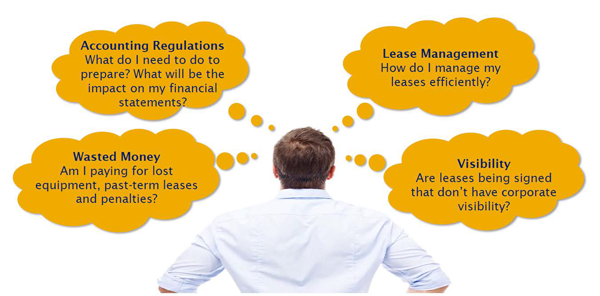It is not possible to effectively manage enterprise-wide leasing activities without understanding the context of the lease lifecycle. Without this context, leasing too easily can degenerate into a disjointed series of ad hoc decision points with a high risk of key information falling through the cracks.
For example, in many large organizations, the responsibility for initiating leases may be distributed to regional or local facilities but, without comprehensive control over the full lifecycle, subsequent key events can get overlooked. As a result, companies may unknowingly be paying a large price on evergreen leases that should have been reviewed and/or terminated but simply continue on because of the open-loop nature of such disjointed administration practices.

Virtually every lease shares a common set of steps in the lifecycle, which can be defined as follows:
- Lease Definition – the “why” and “what” of the proposed lease (equipment specs, ROI, etc.)
- Set-up – the contract details, activation, term, payment processes, etc.
- Onboarding – the receipt, installation, acceptance and operational activation of the asset
- Operation – the payments, accruals, management, servicing, maintenance, etc. of the asset
- Termination – formal close-out of the contract at lease-end or another terminating event
Unless these steps are incorporated within a comprehensive automated lease administration process, your company is at significant risk of losing control over your lease portfolio, which will inevitably result in higher costs, wasted time and lack of visibility into the assets on your books. In addition, without such a process your company will likely be at risk of non-compliance with the new FASB and ISAB lease accounting standards (ASC 842 and IFRS 16) that go into effect in 2019.
As long-term innovation partners with SAP, Bramasol and Nakisa have brought together a comprehensive set of solutions and expertise to help companies assess and prepare for the new FASB and IASB leasing standards. These solutions unify disparate leasing data and provide enhanced visibility for companies to make informed decisions on their lease portfolios, assets and liabilities while conforming with the new requirements.
The latest eBook from Bramasol and Nakisa provides a step-by-step look at the key elements in the lifecycle of a lease and details how a comprehensive end-to-end administration approach can improve efficiency, save money, reduce risk and assure compliance with new accounting standards.
Click Here to Download the eBook: End-to-End Management of the Lease Lifecycle

